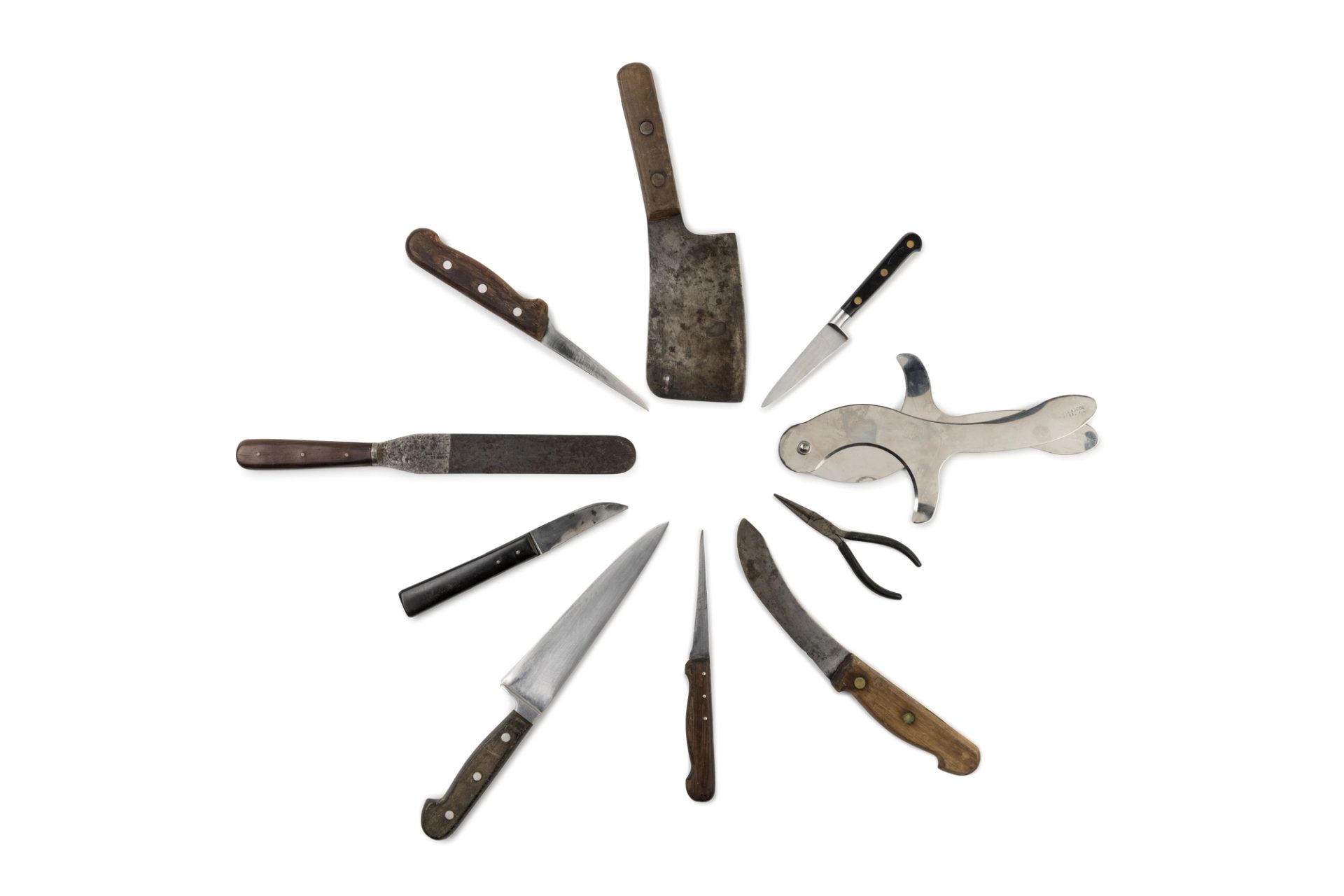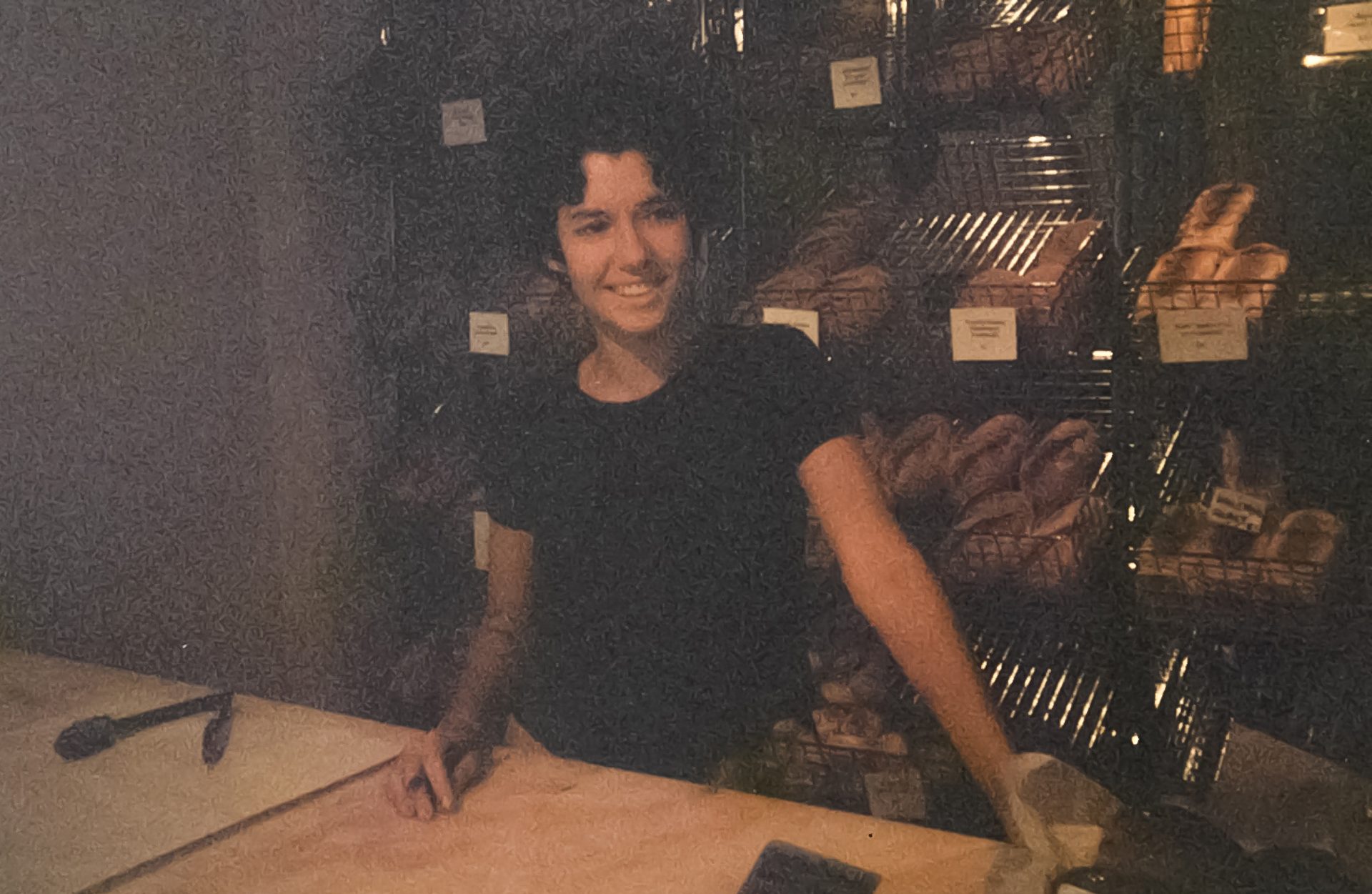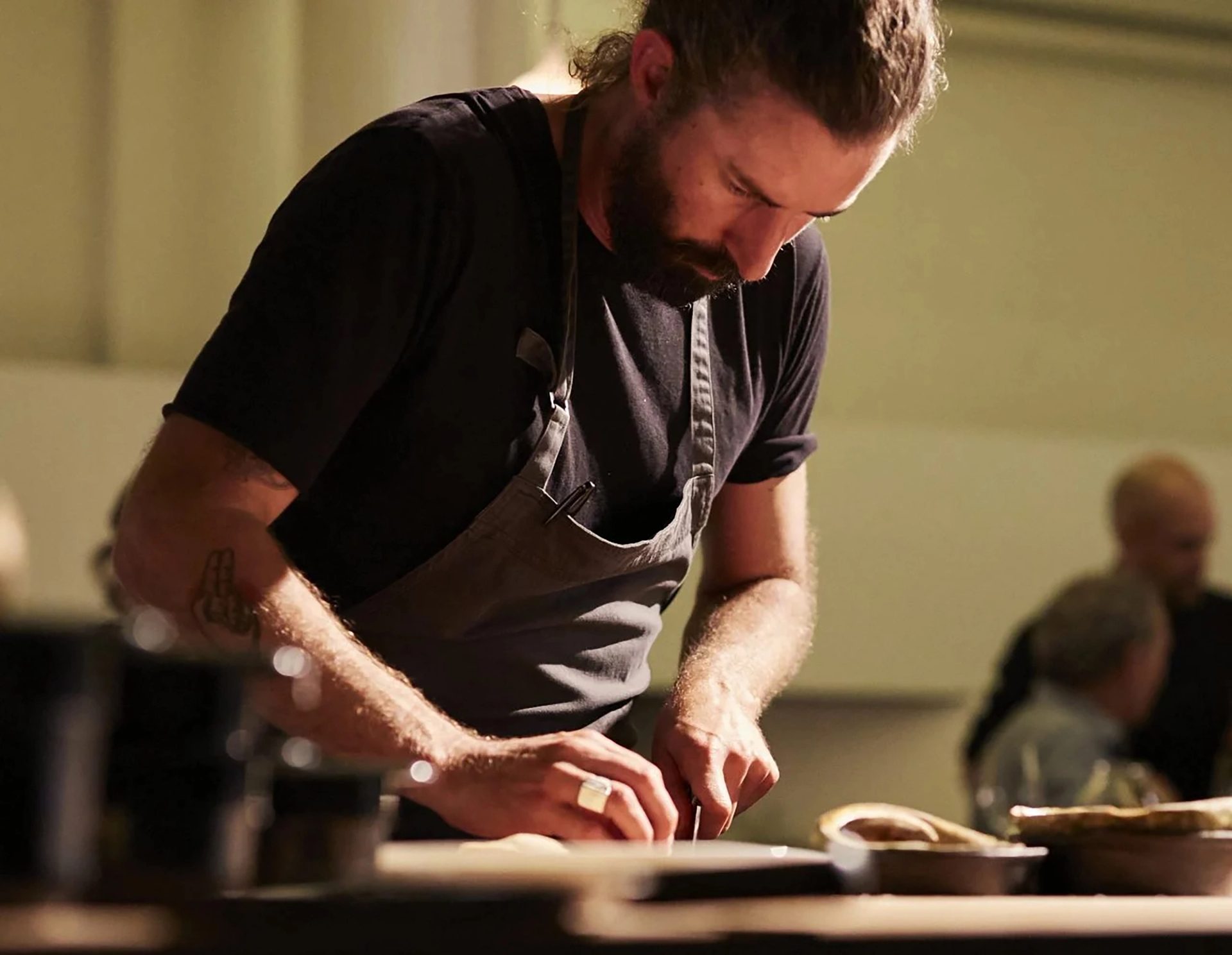The camera eats first

Australian Culinary Archive
Established by Powerhouse in 2020, the Australian Culinary Archive is a living, evolving repository of our food industry: the chefs and cooks, food producers and vendors, writers and photographers, critics and diners whose hunger for innovation has coalesced over the decades into a vital sphere of cultural production. It is a storehouse for oral histories, written records, photographic documentation and unique artefacts that attest to the passion and distinction that typify this vast sector.
Led by Julie Gibbs, who has published a long list of Australian cookbooks in a 35-year career, the Australian Culinary Archive oral history archive brings together voices from across the food industry — from renowned professional chefs to community and household cooks as well as those that support and celebrate them.
About
Earl Carter is one of Australia's most experienced photographers of food, architecture, landscape and portraiture. His images have been published in leading magazines and journals as well as many books such as Thai Food by David Thompson, A Foodlover's Pilgrimage to Santiago de Compostela by Dee Nolan and The Cook's Companion by Stephanie Alexander. Earl is the food photographer for The Saturday Paper.
Julie Gibbs is the curatorial adviser to the Australian Culinary Archive, a major initiative of Powerhouse Museum, collecting and preserving the stories and archives of Australia's leading chefs and producers. In her extensive career in book publishing Julie has given voice to and published works by our chefs, cooks and food writers.
The Camera Eats First
From behind the camera, food photographer Earl Carter interprets and informs the processes of some of Australia's leading chefs. In this interview from the Australian Culinary Archive he describes the quest for beauty and light in his work.
Julie Gibbs Can you tell me where you grew up?
Earl Carter I was born and raised in Melbourne, one of three children. My mother was a florist and had an appreciation of the natural world. She would take me to the [Queen] Victoria Market to do the weekly shop. It was at the time of postwar immigrants in Australia, so there was a lot of Italian and Greek fruit and vegetable sellers. There was always banter between them and my mother.
It wasn’t till much later that I ended up passionate about food and food photography. My mother arranged for me to be a Lions Club exchange student to Japan when I was 15. I ended up going to Fujiyoshida, about two hours south of Tokyo, at the foothills of Mount Fuji.
A friend of the host family was a photographer. He would come and pick me up at three o’clock in the morning. He couldn’t speak English, I couldn’t speak Japanese, so it was just a lot of gesturing and pointing. I would help with his large-format camera and tripod and we’d stumble through the snow in the pitch black, set up at a predetermined point and wait for the sun to rise. Sure enough, there was the classic scene of the sun rising over Mount Fuji with the ancient water mill and the house below. It was amazing.
I think that had a big bearing on me. I suddenly realised that there’s a world of beauty out there and you just need to take the time to discover it.
At the age of 17 I went to RMIT and studied bachelor of arts in photography. I’ve done nothing but photography my whole life. I love it.
JG It’s given you an interesting life, hasn’t it?
EC I think that being a photographer, you should change it to being a voyeur. You get into all sorts of environments and witness things that are just beyond your expectations, and it’s such a privilege to do that.
JG You are always chasing beauty and light, but you can work with a variety of subjects – interiors, architecture, food, landscapes, portraits. You are across it all, aren’t you?
EC I pride myself in being like that and that’s a direct product of the education at university. History of photography was a very important part, as well as chemistry and physics. It wasn’t just, pick up a camera and go and shoot things. It was actually a quite hard and disciplined learning process. The result of that is I feel I’ve become quite rounded in understanding what the ability of using light is all about, the colour, the density, the contrast, the different light spectrums.
JG Can you talk about the Australian food magazines that took Australian food to the world? Your images were part of that?
EC I started work as an interiors photographer, but the opportunity came at some point to shoot food with home cooks, even some smaller-time chefs. It struck me that the world of publishing had moved on from creating imagery to capturing imagery in a way that there was very little art direction. Reality is what you are capturing rather than creating reality, if that makes sense – to capture things in their natural form.
That’s not to say that we didn’t put a knife or a fork or a glass in there. It’s just that we didn’t over-construct things. There’s one particular art director who was very significant and very supportive, Sharyn Storrier Lyneham. It was known as the Australian look. Well, it was actually known as the Vogue Entertaining look.
JG Would you say that light was at the essence of that look? Our Australian light?
EC I think it’s more the understanding of light. It’s the degree of experimentation that we all adopted; using sunlight streaming through the window was a legitimate light source. It didn’t have to be a large flash unit coming through a window that was consistent and most likely lifeless. It was a great experiment to turn around and use shadows and natural light on the food that was far more considered or appreciated. That also coincided with the change in the culinary atmosphere. Chefs were coming out of traditional kitchens with laboured food processes and were embracing provenance of product, the natural tastes, the natural presentation of produce.
Having said that, it’s important that not everything was shot with natural light, and not everything is shot with natural light. It was important photographers from Australia had an understanding of how to re-create that light using artificial light. I think that’s something that the rest of the world has not seen.
JG Can you recall who some of the chefs were that you worked with in that way early on?
EC Well, Rick Stein sought me out from the work that I had done. I have a huge respect and admiration for Neil Perry’s knowledge of produce and process. He’s been very supportive of me.
David Thompson… I can remember going to Darley Street Thai and being wowed by the food that was there. A lot of fun on the journey working with him.
Stephanie Alexander, who had a huge reputation and I admired and respected what she’d done. I tried hard to complement that with imagery.
Kylie Kwong is another really passionate chef and her personality comes out in her food. I would never approach shooting a Kylie Kwong dish like I would shoot a Neil Perry dish. Kylie’s process is quite captivating. It’s important to capture the personality of a chef. It’s the way that they plate and combine tastes and textures. It’s the way that they are so passionate about produce. It’s important not to disregard that and put your own style on top. Karen Martini is a classic example.
Maggie Beer is a passionate and heartfelt chef. You can’t help but be engrossed in that atmosphere and it’s very homely, quite approachable, quite simple. Whereas somebody like Andrew McConnell is quite a leader in the culinary world and his audience are sophisticated restaurant-goers. I try to photograph the food and create the imagery that has more of a graphic interest so that it’ll lead the viewers to analyse why things are placed in a certain way, most likely Japanese influenced or Asian influenced.
JG Let’s come to your work for The Saturday Paper and the style of photography that you bring to that commission and then how you had to pivot in Covid.
EC I took on the project trying to represent food in a slightly different way, to show there can be a lot of interest and romance in the process of cooking rather than the finished product. That may just be a potato completely covered in dirt. I feel like that is a piece of art on its own.
I’ve set a template where it is actually a mini story, and it goes from produce, through process, to final dish. It’s important to show some of the key processing elements and what it looks like at a particular point in time.
In Andrew’s kitchen in one of his restaurants, or Karen’s kitchen at home, there’s always a plethora of stuff going on behind, whether it’s shopping bags full of carrots, or Annie Smithers and her baskets full of turnips that she’s just dug out of the ground. They’re such beautiful, captivating things that they’re an important part of the story.
That all changed during Covid. Because of the lockdown, nobody was allowed to travel anywhere, as we all know. Fortunately, digital technology has advanced enough that we could shoot them live on the iPhone.
I’m talking to David Moyle, who’s in Byron Bay. He tells me what his intentions are, what he’s preparing for the dish, and then we start to hash out together what that storyline could look like. That involves Dave walking around his house or the kitchen he’s in, finding surfaces from the most unexpected places, but I’m actually not in the same room, or even in the same state, or in some instances not even in the same country.
Together we work out how we would shoot that and fulfil the template. I have to talk the chefs into thinking a little bit left field. Their iPhone is literally pointing at the tabletop, and I’ll ask them to move this bowl to the left. Do you have a large spoon that we could put in there? Maybe the garlic looks better if it’s chopped, O Tama? She runs off and chops it and puts it back.
Then, they send it down the line where I will look at it live and give more feedback and look at using digital enhancements to correct the images. We increase contrast, alter colours, change lighting. It’s actually using my film skills from all those years ago and applying that digitally onto the images they’ve supplied. It’s a different way of working. My peripheral vision is now channelled only through their iPhone. I find it challenging but we are working around it.
JG Where would you say Australian food has come to now?
EC We’re very fortunate, even though some people might not think so, that we’ve had huge influences from all around the world. Somehow we have, excuse the pun, ended up in a melting pot. I feel it’s uniquely Australian because it is a massive mix of cultures. Back that up with the produce as well. I think we’re very fortunate in this country to have the quality.
More and more, and particularly through chefs like Neil Perry and Andrew McConnell, there is this increasing interest in provenance and methodology, and creating produce that’s well sustained, environmentally friendly and incredibly tasteful.
This interview was first published by The Saturday Paper.
More
Powerhouse Food
Powerhouse Food examines food within the context of history and how its connectedness draws together land, creatures, people, roads, factories, markets and waterways, sustaining us and holding our futures.






















